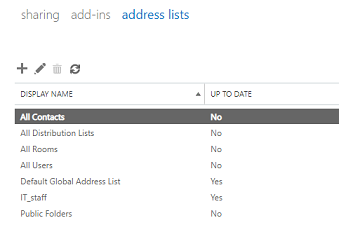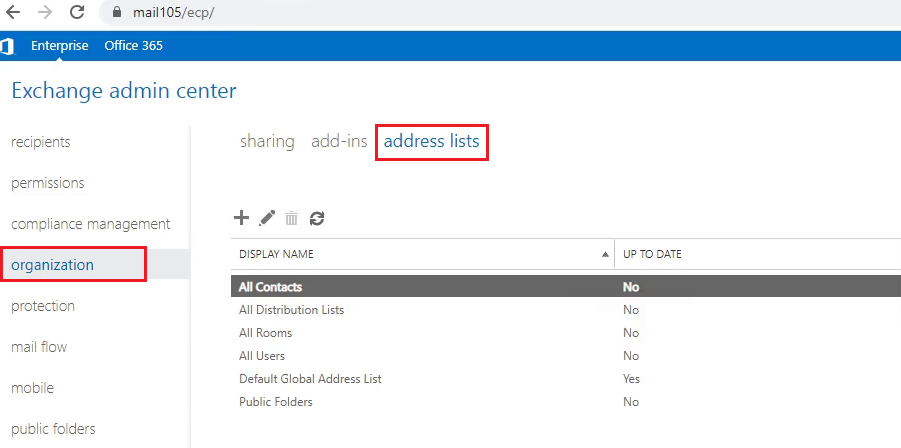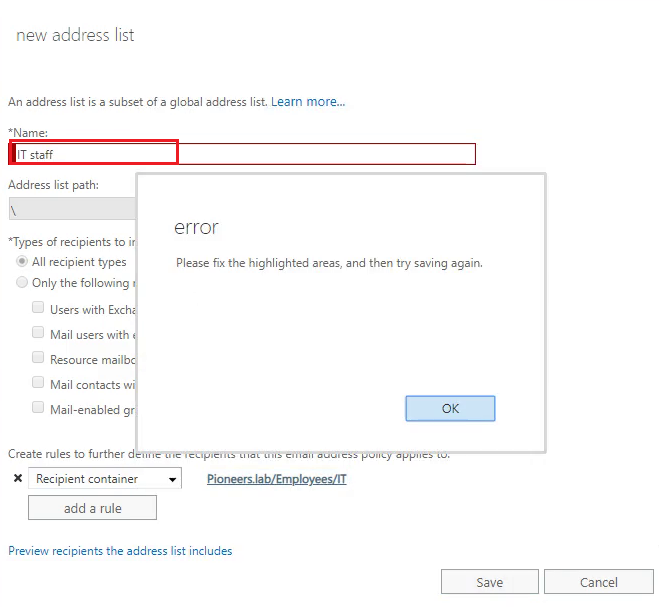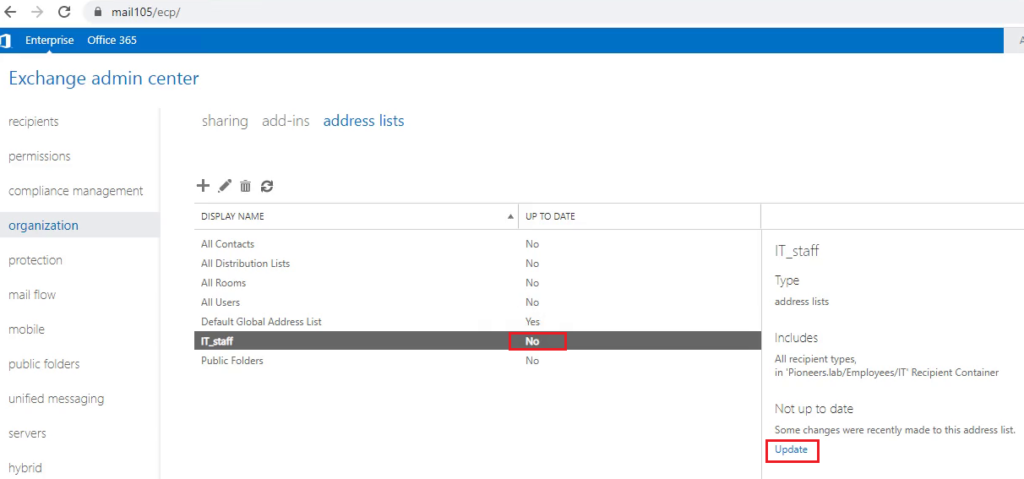address list introduction
An address list is a collection of recipient and other Active Directory objects. Each address list can contain one or more types of objects (for example, users, contacts, groups, public folders, and room and equipment resources)
In Exchange Server 2016, there are some predefined address lists that created with exchange installation
An offline address book (OAB) is a copy of an address list collection that can be downloaded so a user running Outlook in cached mode can access the address book while disconnected from the server
In large organizations where the Global Address List (GAL) may contain thousands of recipients
customized address lists can be created to simplify the process of finding recipients in Easley manner
.A hierarchical address book allows end users to look for recipients in their address book using an organizational hierarchy.
In this article, you will discuss the different types of address lists and address books. So you can :
- configure address lists.
- configure offline address books.
- configure address book policies.
- configure hierarchical address book
Default Address list
All Contacts
This address list contains all mail-enabled contacts in your organization.
Mail-enabled contacts are recipients who have an external email address.
If you want mail-enabled contact information to be available to all users in your organization, you must include the contact in the GAL.
All Distribution Lists
This address list contains mail-enabled groups, such as mail-enabled security groups, distribution groups, and dynamic distribution groups in your organization.
Mail-enabled groups are lists of recipients that are created to accelerate the multi sending of email messages and other information.
When an email message is sent to a mail-enabled group, all members of that list receive a copy of the message.
All Rooms
This address list contains all resources that have been designated as a room in your organization.
Rooms are resources in your organization that can be scheduled by sending a meeting request from a client application.
The user account that is associated with a room is disabled
All Users
This address list contains all mail-enabled users in your organization.
A mail-enabled user represents a user outside your Exchange organization.
Each mail-enabled user has an external email address.
All messages sent to mail-enabled users are routed to this external email address.
A mail-enabled user is similar to a mail contact, except that a mail-enabled user has Active Directory logon credentials and can access resources.
Default Global Address List
This address list contains all mail-enabled users, contacts, groups, or rooms in the organization.
During setup, Exchange creates various default address lists.
The most familiar address list is the GAL.
By default, the GAL contains all recipients in an Exchange organization;
therefore, any mailbox-enabled or mail-enabled object in an Active Directory forest that has Exchange installed is listed in the GAL.
For ease of use, the GAL is organized by name rather than by email address.
Create Costume Address List
in the following scenario : we will create customized address list that include ONLY users in Organization Unit IT











